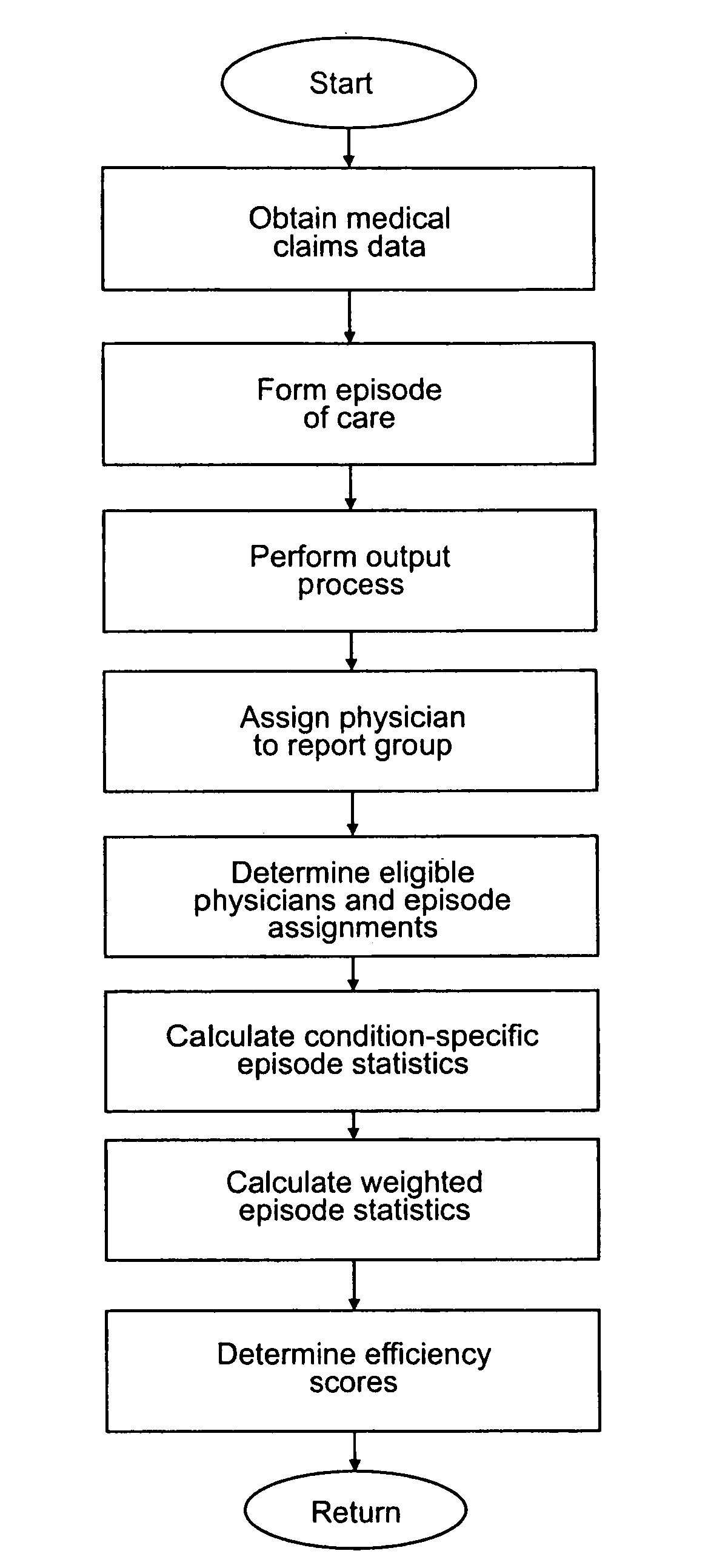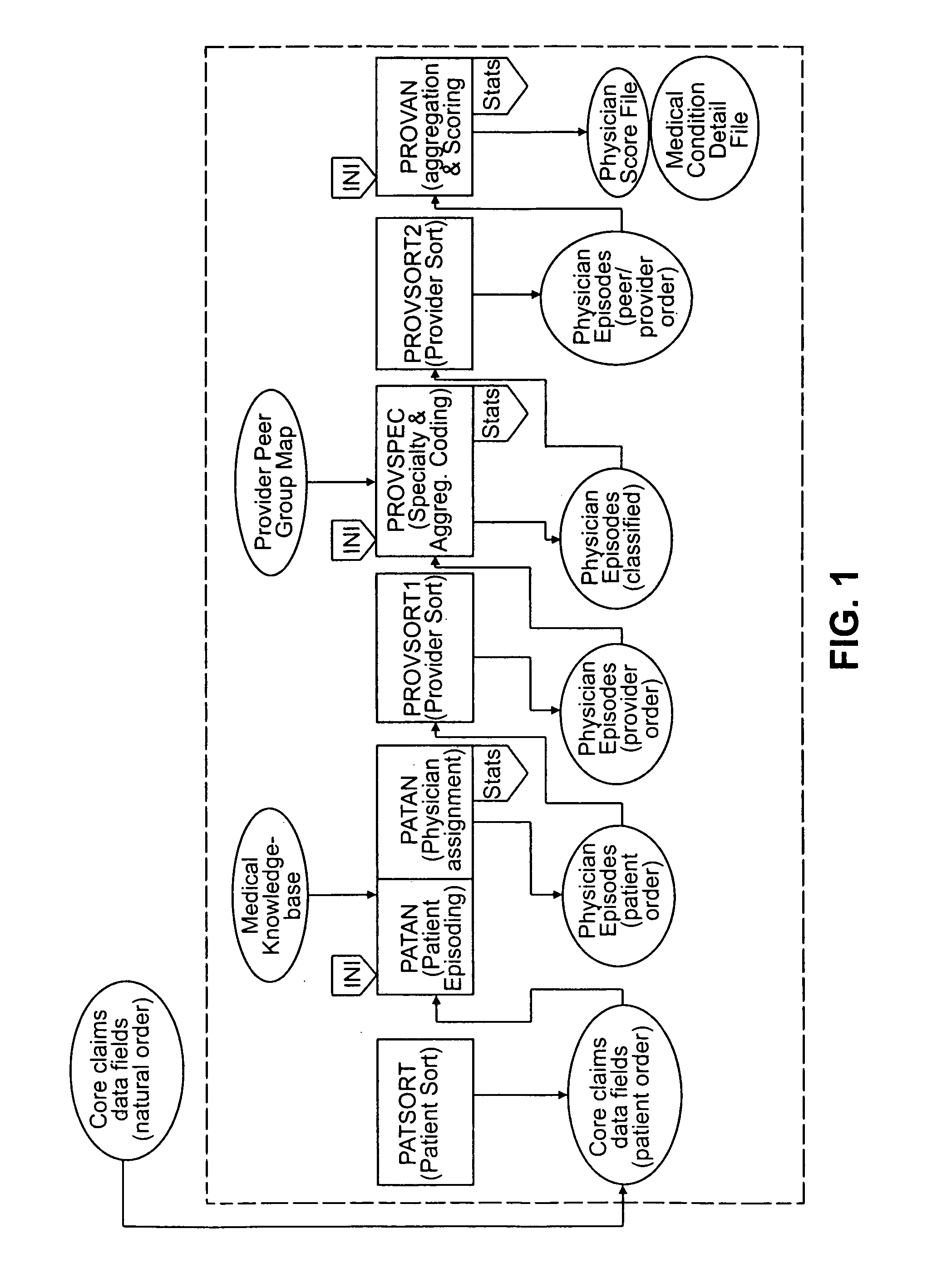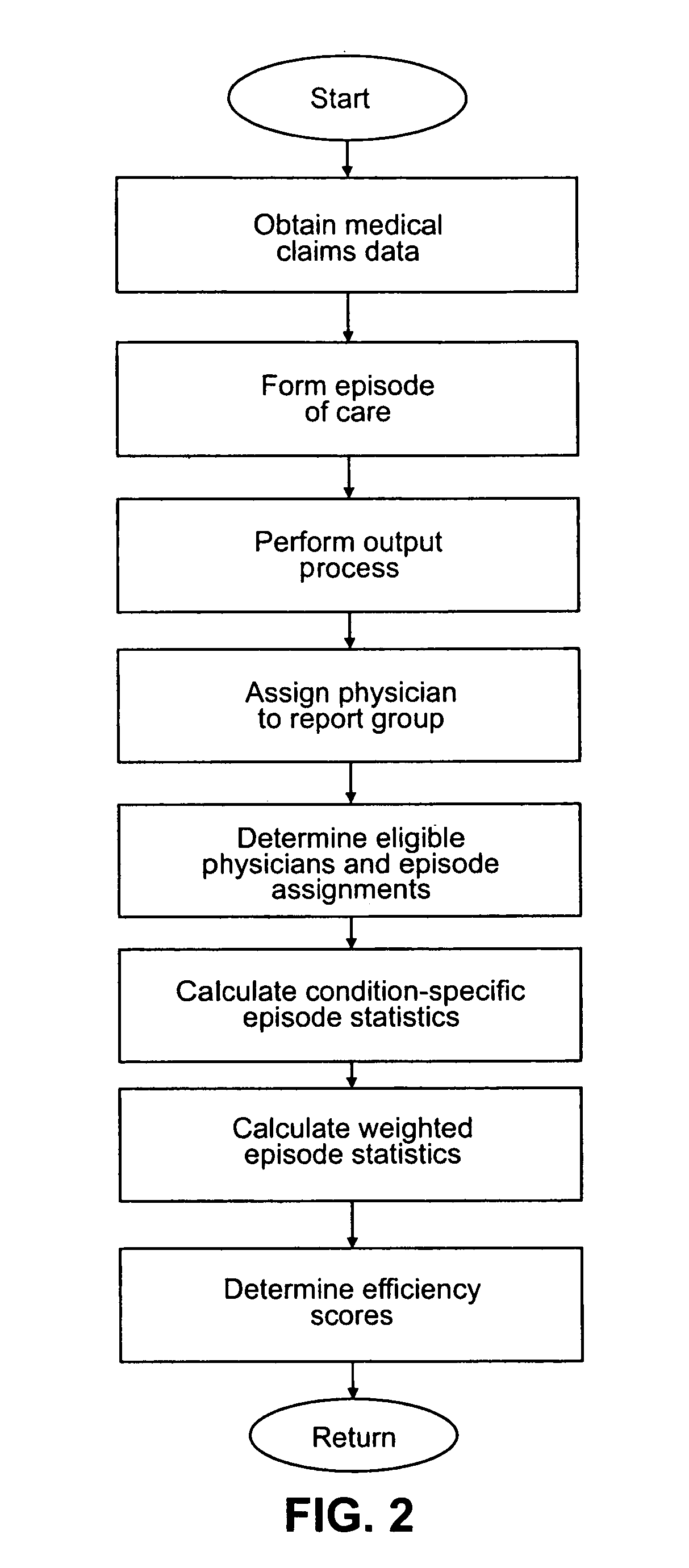Recent evidence has suggested that about 10-20% of physicians, across
specialty types, practice inefficiently.
This means that when one
system ranks a physician as inefficient, only about 15-30% of the other systems ranked the same physician as inefficient.
These findings show that existing systems have
significant error in attempting to accurately identify inefficient physicians.
Every physician falsely measured as efficient (or inefficient) leads to continued inefficiency in the healthcare marketplace.
These approaches probably add the most to efficiency measurement error.
This means that over 95% of the variance is unexplained, and may be attributed to differences
in patient health status.
This means that 70% or more of the variance continues to be unexplained, and may be attributed to differences
in patient health status.
Physicians often criticize the services per 1,000 members and the all episodes of care methodologies that use a predictive case-mix adjustment factor.
Physicians state that the methodologies do not appropriately adjust for differences
in patient health status—rightly stating that their patients may be “sicker.”
This
weakness in current case-mix adjustment tools means that not all CLIs or patient episodes of care treated by a physician can be examined.
The second measurement error, which occurs in most if not all current efficiency measurement systems, occurs when the physician's actual episode composition is used.
This variability is not due to the efficiency or inefficiency of a physician, but instead results because longer and more resource-intensive medical conditions generally require more services and, therefore, have more potential variability around average (or mean) episode treatment charges.
If the statistically based variability around the mean is not corrected, then substantial error may enter into the physician efficiency measurement equation.
Logically, then, if all episodes treated by physicians are examined and efficiency scores are calculated, there has to be some statistical bias present.
A significant statistical bias may be present.
The third error takes place in those efficiency measurement systems that do not employ an appropriate episode severity-of-illness measure.
Most, if not all, current claims-based episode groupers and methods do not have an appropriate severity-of-illness index by medical condition.
The end result may be physician efficiency differences that are attributed to inaccurate episode severity-of-illness adjustment, and not to physician treatment patterns variation.
However, stratification based on the presence of
surgery or a high-cost service results in at least two physician efficiency measurement errors: (1) performing
surgery versus not performing
surgery is the treatment patterns variation we need to examine in determining physician efficiency, and this variation is not captured in more traditional methodologies; and (2) the episodes of care are unnecessarily separated into smaller groups whereby physicians may not have enough episodes to examine in any one smaller group.
The fourth physician efficiency measurement error occurs in claims-based episode groupers do not have a method for identifying different episode treatment stages including initial, active, and follow-up treatment stages.
The blending of initial, active, and follow-up episodes may lead to substantial physician efficiency measurement error.
Then, Oncologist A's treatment pattern for
breast cancer will appear inefficient (as compared to his peer group of oncologists) because active episodes are about 30 times more expensive to treat than follow-up episodes.
The fifth error happens in those physician efficiency measurement systems that do not examine condition-specific episodes by age category.
The sixth error occurs in those physician efficiency measurement systems that do not link and include the charges and utilization from a patient's complication episodes to his underlying medical condition.
Consequently, many condition-specific episodes have under-reported charges.
Furthermore, for patients with specific medical conditions, any model that attempts to stratify patients by
health risk may produce unstable or erroneous results.
The seventh physician efficiency measurement error happens when the condition-specific
outlier episode analysis is not performed in an appropriate manner.
However, this method results in physician efficiency measurement error because a higher proportion of episodes assigned to the most inefficient physicians will be eliminated (as compared to the proportion of episodes eliminated for efficient physicians).
Consequently, the inefficient physicians' condition-specific treatment patterns now more closely resemble the treatment patterns of the efficient physicians.
The eighth error occurs in those systems that under-report charges attributed to partial (or incomplete) episodes of care.
Some methodologies do not separate partial from complete episodes of care when measuring physician efficiency.
However, including partial episodes leads to inaccurate efficiency measurement because of under-reported episode charges—especially when some physicians have more partial episodes than other physicians.
The ninth error happens in physician efficiency measurement systems that over-report charges attributed to episode endpoints.
Some methodologies do not appropriately end a patient's episode of care before measuring a physician's efficiency.
The end result may be physician efficiency differences that are attributed to excessively long or variable
chronic condition episode durations—and not to treatment patterns variation.
The tenth error takes place in those systems that impose few requirements for having a minimum number of episodes in a certain number of medical conditions.
However, there may be significant episode of care heterogeneity in one or two condition-specific episodes—even after applying a sophisticated severity-of-illness index.
Consequently, examining an episode here-and-there for a physician may introduce
significant error into a physician's efficiency measurement.
However, none of these systems adequately overcome the aforementioned problems with respect to appropriately building and analyzing episodes of care.
As importantly, existing systems fail to discuss an episode-of-care-based
system for measuring individual or physician
group efficiency measurement.
 Login to View More
Login to View More  Login to View More
Login to View More 


